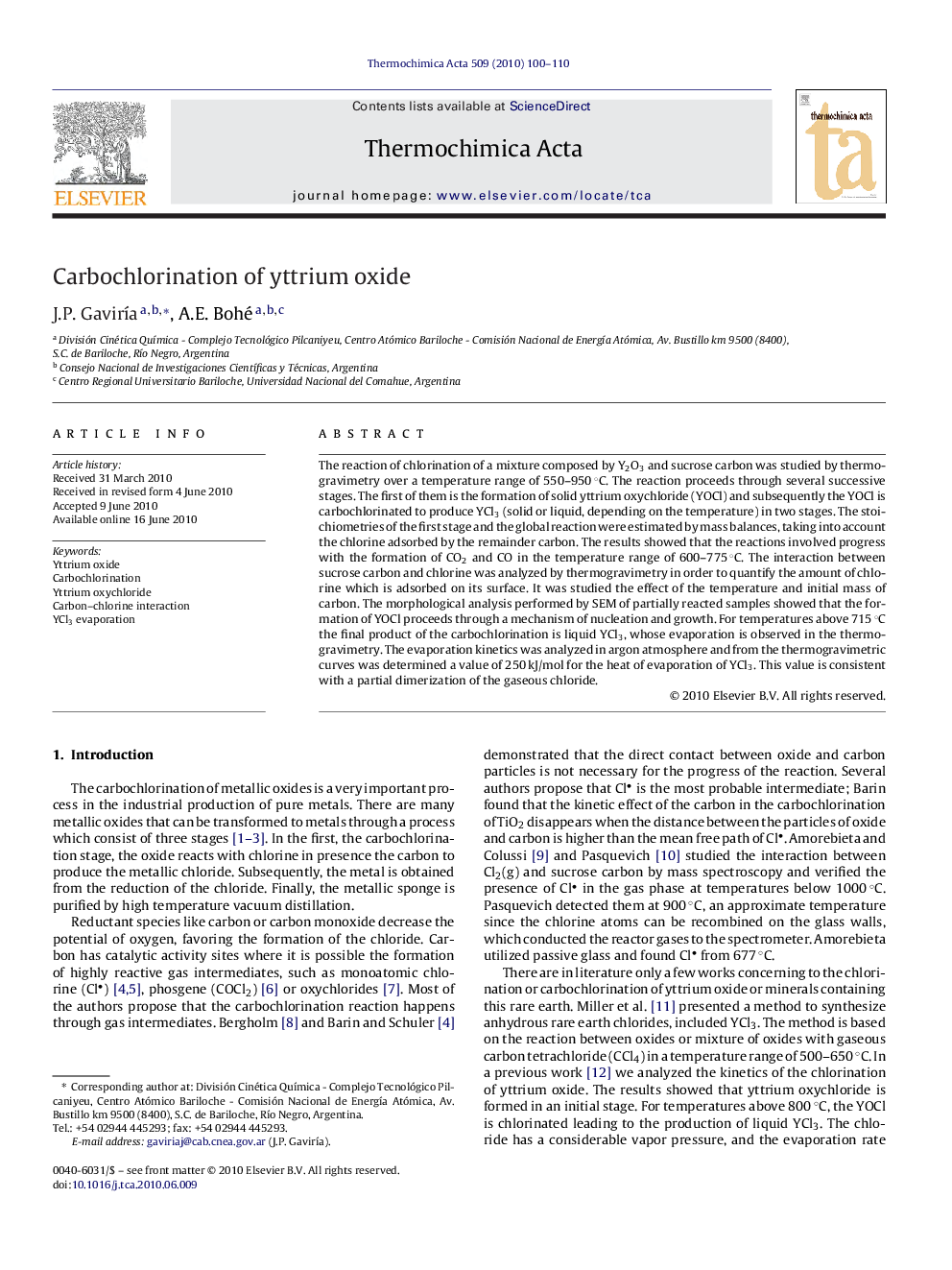| Article ID | Journal | Published Year | Pages | File Type |
|---|---|---|---|---|
| 674791 | Thermochimica Acta | 2010 | 11 Pages |
The reaction of chlorination of a mixture composed by Y2O3 and sucrose carbon was studied by thermogravimetry over a temperature range of 550–950 °C. The reaction proceeds through several successive stages. The first of them is the formation of solid yttrium oxychloride (YOCl) and subsequently the YOCl is carbochlorinated to produce YCl3 (solid or liquid, depending on the temperature) in two stages. The stoichiometries of the first stage and the global reaction were estimated by mass balances, taking into account the chlorine adsorbed by the remainder carbon. The results showed that the reactions involved progress with the formation of CO2 and CO in the temperature range of 600–775 °C. The interaction between sucrose carbon and chlorine was analyzed by thermogravimetry in order to quantify the amount of chlorine which is adsorbed on its surface. It was studied the effect of the temperature and initial mass of carbon. The morphological analysis performed by SEM of partially reacted samples showed that the formation of YOCl proceeds through a mechanism of nucleation and growth. For temperatures above 715 °C the final product of the carbochlorination is liquid YCl3, whose evaporation is observed in the thermogravimetry. The evaporation kinetics was analyzed in argon atmosphere and from the thermogravimetric curves was determined a value of 250 kJ/mol for the heat of evaporation of YCl3. This value is consistent with a partial dimerization of the gaseous chloride.
